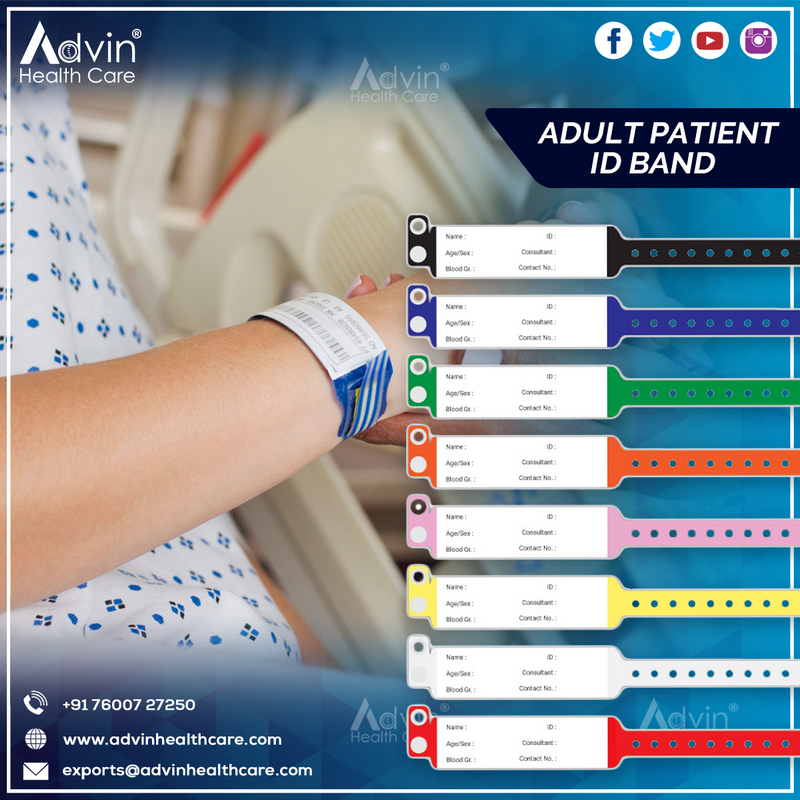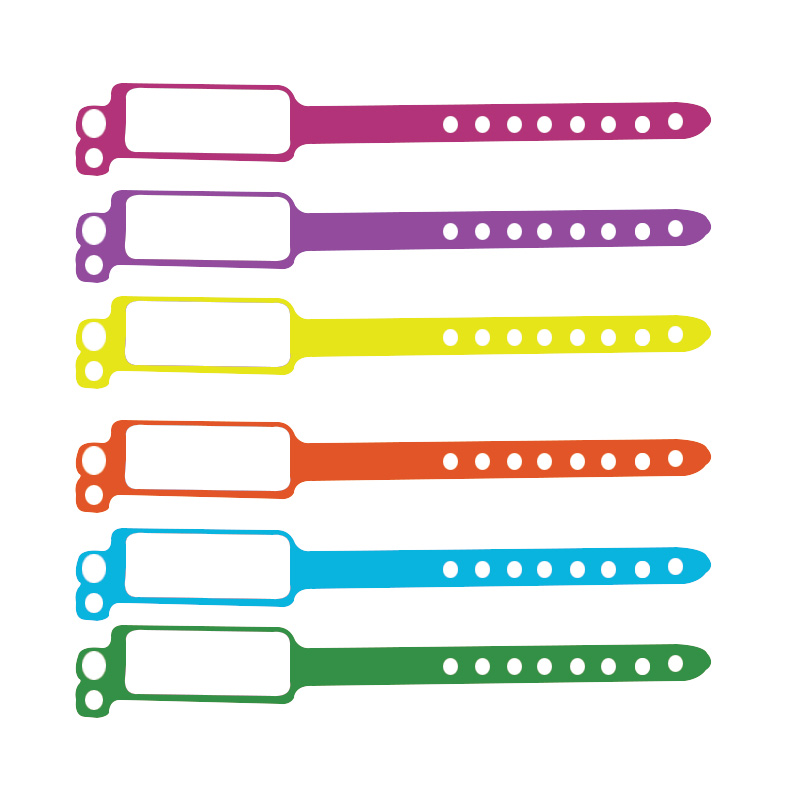Why Investing in a Premium Patient Identification Band is Crucial for Medical Institutions
Why Investing in a Premium Patient Identification Band is Crucial for Medical Institutions
Blog Article
A Comprehensive Overview to Patient Identification Band as a Vital Medical Supply
In the vast landscape of health care, Patient Identification bands have become an essential device (patient identification band). These bands, brimming with crucial information, act as the first line of defense versus clinical errors and make sure smooth Patient care. As we start to discover these clinical materials in depth, we uncover the intricacies of their layout, use, and influence on Patient security, while hinting at the promise they hold for future clinical techniques
The Duty of Patient Identification Bands in Medical Care
The value of Patient Identification bands in healthcare can not be overstated. These simple wristbands work as the key approach of making certain Patient identity, decreasing the risk of medical mistakes and improving general Patient safety. They are a vital tool in validating a client's identification before administering therapies, medications, or performing procedures. They are typically color-coded to denote various health and wellness conditions, allergic reactions, or danger factors, permitting quick visual Identification by healthcare specialists. In the fast-paced, high-pressure globe of medical care, where human lives go to stake, the benefits of such a simple yet reliable tool are invaluable. Patient Identification bands offer a system of balances and checks, a fail-safe versus potential errors, and a constant tip of the individual behind the therapy.
Translating the Information on Patient Identification Bands
While they might appear straightforward at a glance, Patient Identification bands bring vital info that can significantly influence the training course of an individual's care. These bands commonly display the Patient's name, date of birth, and an one-of-a-kind identifier, such as a medical record number. These critical pieces of information guarantee correct Patient Identification, avoiding medical errors. Some bands may likewise include crucial medical notifies, such as allergy info, which can be important in protecting against damaging responses. In addition, the barcode located on these bands can be checked to access the Patient's electronic health and wellness document, supplying a wide range of information to doctor. Recognizing the info on these bands is crucial for efficient and secure Patient care.
Different Kinds Of Patient Identification Bands: A Closer Appearance
In the realm of Patient Identification, there are several types of bands that serve unique functions. Barcode Identification Bands, RFID Tag-based Bands, and Color-Coded Patient Bands are the main groups - patient identification band. Each kind presents unique functions and benefits, which will be examined in the following areas
Barcode Identification Bands
Providing a substantial enhancement in Patient safety and security, barcode Identification bands have actually come to be an important tool in the clinical field. These bands store vital Patient information in a barcode format that's rapidly accessible with a scan. Significantly, these bands have actually dramatically reduced medical errors and enhanced Patient security.
RFID Tag-based Bands
An additional cutting-edge approach in Patient Identification is making use of RFID Tag-based bands. These bands make use of Radio Frequency Identification (RFID) modern technology to supply a safe and secure kind of Patient Identification. Unlike barcodes, RFID tags can save far more info and can be checked out without straight line of vision. This indicates that health care experts can access important Patient information, even if the band is covered by apparel or bed linens. RFID tags can be reprogrammed with updated details as required, boosting their performance. These bands can be extra pricey than various other kinds of Identification, and there are personal privacy concerns associated with the usage of RFID technology. In spite of these challenges, RFID tags supply substantial capacity for improving Patient security and efficiency in medical care.
Color-Coded Patient Bands
Color-coded Patient bands stand as a simple yet effective device in Patient Identification. These bands, widespread in healthcare facilities and centers, utilize different shades to indicate numerous Patient allergies, conditions or risks, ensuring prompt acknowledgment by health care specialists. Therefore, the color-coded Patient band system is a crucial element of Patient safety and security and effective healthcare distribution.

Use of Patient Identification Bands: Treatments and Procedures
In health care setups, making use of Patient Identification bands plays a critical function in guaranteeing Patient security and decreasing medical errors. These bands, usually made of resilient, hypoallergenic material, are affixed to the Patient's wrist or ankle, displaying essential information such as name, date of birth, and a special identifier. The procedure is normally implemented throughout admission, with the info double-checked for accuracy. For newborns, bands are affixed to both the baby and mom to avoid inequalities. In senior care, 2 bands might be used for patients with mental deterioration to make certain appropriate Identification. Adhering to these procedures helps to avoid Patient misidentification, a precursor to significant clinical errors. This technique is a testimony to the necessary nature of Identification bands in Patient treatment.
The Effect of Identification Bands on Patient Security
Identification bands play a vital role in preserving Patient safety in medical care settings. Their usage can substantially reduce medical mistakes by making sure that the right Patient receives the right therapy. In addition, these easy devices add to enhancing the high quality of treatment by providing an extra layer of confirmation to Patient identities.
Minimizing Medical Errors
Patient Identification bands have actually arised as a vital device in considerably reducing these mistakes. Most importantly, these bands guarantee that every Patient is appropriately matched with their medical documents, examinations, and treatments, thereby dramatically minimizing the risk of clinical errors. By guaranteeing accurate Patient Identification, these bands contribute to boosted Patient safety, building Check Out Your URL depend on and confidence in the medical care system.
Making Sure Proper Therapy
Protecting Patient safety and security, Identification bands play a pivotal role in guaranteeing the appropriate management of therapies. These bands have essential information such as the Patient's name, day of birth, and unique Identification number. In essence, Patient Identification bands offer as a crucial secure in the health care setup, significantly contributing to Patient security and making certain correct therapy.

Enhancing Top Quality Care
While they might appear trivial, patient Identification bands considerably boost the high quality of treatment provided in health care setups. They are an important device in ensuring Patient safety and security because of their capability to provide immediate access to essential information. This includes the Patient's clinical background, allergic reactions, and present therapy strategies. Utilizing these bands decreases the danger of clinical mistakes, such as incorrect medicine administration or surgeries. They reinforce the personal connection between healthcare company and Patient, boosting trust fund and interaction. This straightforward, cost-effective band thus plays an important role in Patient safety, significantly impacting the overall quality of care. The fostering of Patient Identification bands is, as a result, a needed procedure in all health care atmospheres.
Exploring the Future of Patient Identification Bands in Clinical Method

Final thought
Patient Identification bands play an essential duty in healthcare, making sure exact Patient Identification and decreasing medical mistakes. As clinical practices continue to develop, Patient Identification bands will certainly remain an important component of the medical care system.
While they might seem simple at a look, Patient Identification bands carry vital information that can considerably influence the training course of a patient's care.Color-coded Patient bands stand as an easy yet efficient device in Patient Identification.In medical care settings, the use of Patient Identification bands plays a critical duty in ensuring Patient security and lowering medical mistakes. In essence, Patient Identification visit site bands offer as a crucial protect in the health care setting, dramatically contributing to Patient safety and security and making certain correct therapy.
Patient Identification bands play an important function in healthcare, top article making sure exact Patient Identification and reducing clinical mistakes.
Report this page